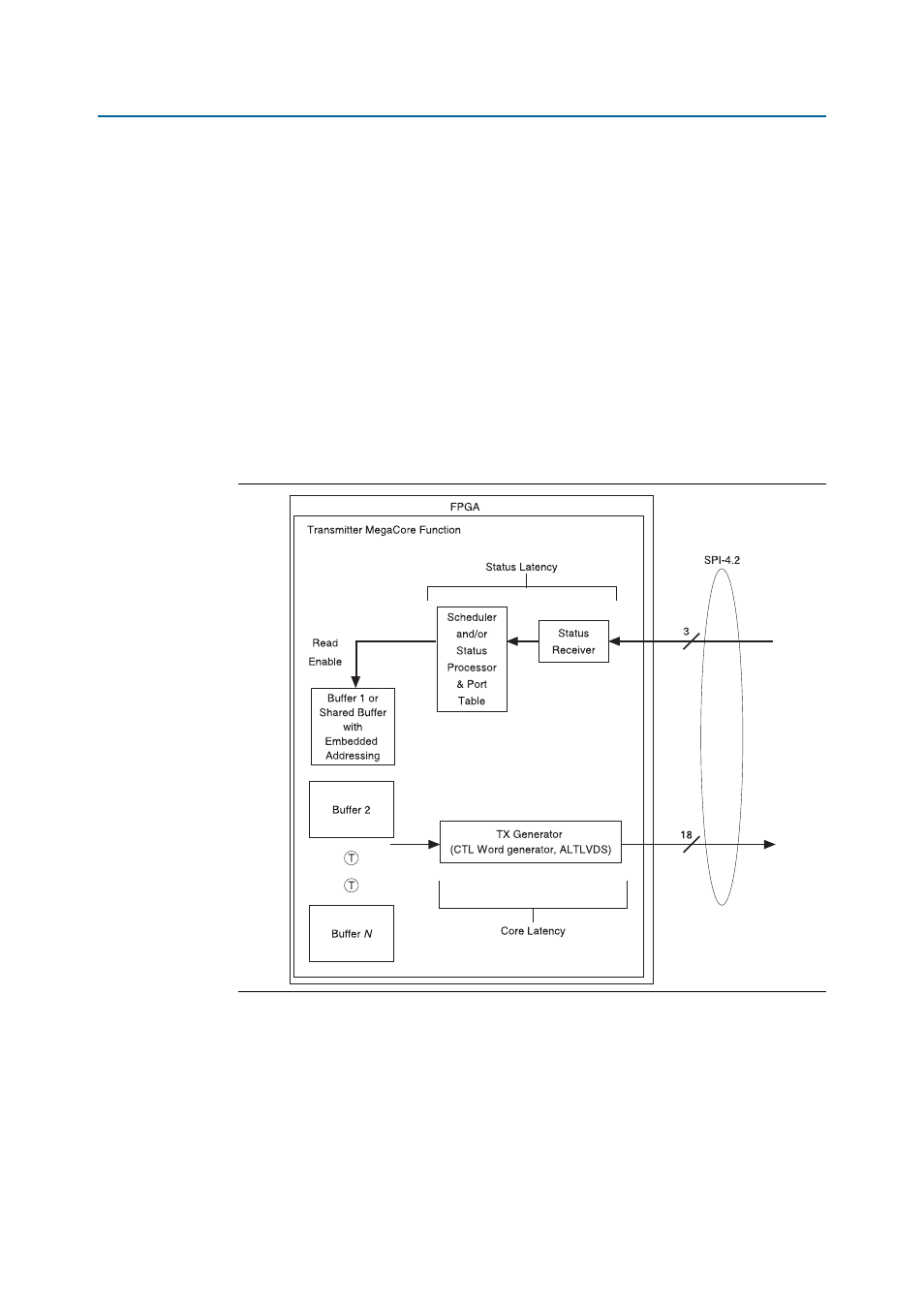Latency information – Altera POS-PHY Level 4 IP Core User Manual
Page 96

5–26
Chapter 5: Functional Description—Transmitter
Latency Information
POS-PHY Level 4 IP Core User Guide
December 2014
Altera Corporation
Latency Information
The transmitter IP cores involve two kinds of latency: data latency and status receive
latency.
Data latency is defined as the latency from the Atlantic interface that is reading from
the buffer to the SPI-4.2 LVDS transmit pins. It does not include the latency through
the buffer. For external status, the numbers assume that the aN_atxclk is faster than
the tsclk thus ensuring that the clock-crossing FIFO buffer is empty.
Status receive latency is defined as the latency from the point at which the last cycle of
a valid status message is received (the DIP-2 error code) to the point at which the user
logic or the transmit scheduler can use the status information. It does not include the
time spent waiting for a complete, error-free status message.
Figure 5–12
shows a generic picture of the L
MAX
contributions (transmitter start to
transmitter finish gives the transmitter L
MAX
).
Figure 5–12. L
MAX
Top Level Overview